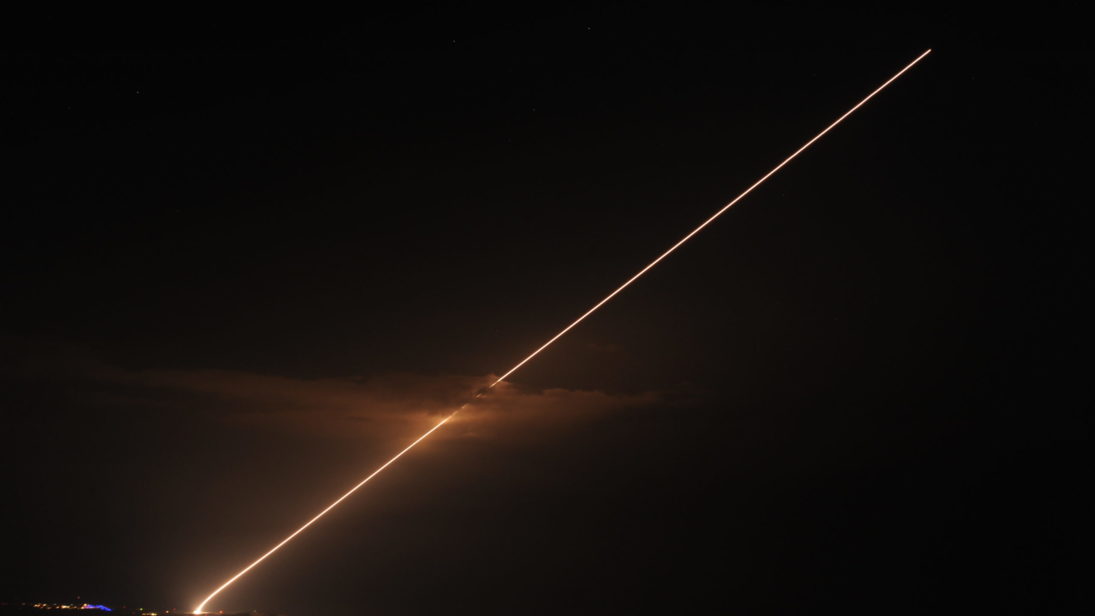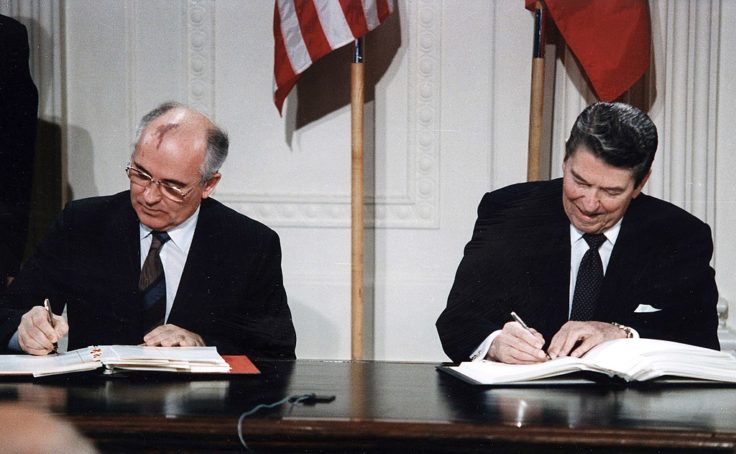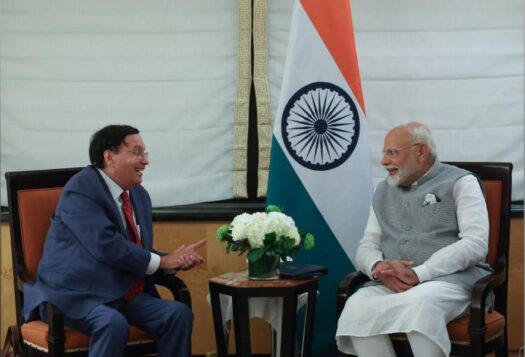
The entire world has been in the grip of the novel coronavirus for more than a couple of months now. The end of this fight is not yet in sight. Economies are in disarray, health facilities are overstretched, and all scheduled events for 2020 – from the personal to the international – stand postponed. While so much uncertainty hangs in the air, the only prediction that can be made with a sense of certainty is that a new kind of normal awaits us. This event marks a paradigm shift that will change our social, economic and political interactions.
For one, the current situation has made the well being of each individual dependent on the good health and hygiene practices of the other. Each is beholden to the other for the security of his or her own health. Any weak link, or laxity in responsible sanitary actions, can lead to the spread of the virus and jeopardize a larger population. There is, therefore, a mutual vulnerability and a shared sense of risk. Each one of us is a prisoner to the other’s sense of responsibility and rationality.
For analysts of nuclear strategy these concepts ring a bell. The possibility or risk of use of a nuclear weapon by the adversary is sought to be deterred by the idea that he too would not escape unscathed from nuclear damage. This state of mutual vulnerability and an ability to rationally calculate the costs and benefits of an action are supposed to undergird nuclear deterrence.
There is, therefore, a mutual vulnerability and a shared sense of risk. Each one of us is a prisoner to the other’s sense of responsibility and rationality. For analysts of nuclear strategy these concepts ring a bell.
During the Cold War, the bilateral deterrent relationship was premised on the idea of both sides being able to cause unacceptable damage to each other in a nuclear exchange. Popular as the concept of mutual assured destruction or MAD, it is largely credited for having kept a nuclear war at bay. Since the United States and the USSR felt vulnerable to each other’s damage, certain norms of nuclear behavior evolved that helped establish crisis and arms race stability. The anti-ballistic missile (ABM) treaty, for instance, was central to formalizing the idea of mutual vulnerability by prohibiting both sides from deploying missile defenses that could offer protection from the nuclear attack of the other.
Interestingly, over the last couple of decades, the holders of the largest nuclear arsenals, the United States and Russia, have been engaged in building capabilities and adopting nuclear postures that they believe can free them from mutual vulnerability. It is argued that mutual vulnerability checkmates the use of the weapon and thus makes it non-usable even for the purpose of deterrence. Therefore, in order to strengthen deterrence, one needs to signal invulnerability to the ability of the other to do nuclear damage. Two ideas of damage limitation have been developed in this context – missile defense (to make oneself impervious to nuclear attack) and limited nuclear war (to reduce one’s damage by
calibrating use).
The idea of ballistic missile defense (BMD) gained primacy in 2000 and the United States decided to abandon the ABM treaty in 2001 to start deploying ballistic missile defense architecture – radars and interceptors to shoot down incoming nuclear missiles. The United States has repeatedly claimed that its BMD deployments were meant to defend its homeland and allies against a handful of missiles from nations like North Korea or Iran, who could not be deterred through the normal rational calculations of cost and benefit of nuclear use. But, Russia and China, the near nuclear peers of the United States, perceived from American capability a potential threat to their nuclear deterrence.
But, Russia and China, the near nuclear peers of the United States, perceived from American capability a potential threat to their nuclear deterrence.
Their response has been to go on improving their own offensive capabilities, such as by deploying countermeasures on missiles, making missiles capable of carrying multiple independently re-targetable warheads, increasing the speed and maneuverability of delivery systems through use of hypersonics, etc. The ensuing offense-defense spiral has ensured that both sides remain mutually vulnerable and hence away from the tendency to irresponsibly use nuclear weapons based on less than rational calculations of the damage they would cause or that they would suffer by initiating nuclear use.
The second way of minimizing mutual vulnerability has been found in the idea of limited nuclear war, or the conduct of nuclear war in such a way that removes one’s vulnerability to large scale nuclear damage. A “limited nuclear war” is expected to be fought with low yield nuclear weapons against military targets. Such thinking had been popular in the United States in the 1960s-1980s when the strategy of flexible nuclear use was envisaged by using counterforce weapons of high precision and accuracy for a “discriminate” nuclear war. Such use of the nuclear weapons was believed to liberate the nation from the tyranny of mutual vulnerability of unacceptable damage promised by the strategy of deterrence by punishment.
However, the folly of the idea of limited nuclear war and the inability to actually run such operations without risking escalation had been realized by the end of the 1980s. It was eventually conceptualized by Presidents Ronald Reagan and Mikhail Gorbachev in a joint statement that admitted that a nuclear war could not be won, and therefore, should not be fought. This asserted the centrality of mutual vulnerability and the illogic of a nuclear war and became the organizing principle of nuclear deterrence. While the presence of nuclear weapons continued to pose risks, these were believed to be the least dangerous when nuclear equations recognized mutual vulnerability and hence the need for responsible behavior.

From the mid-2010s, however, the United States appears to have been rethinking the concept of limited nuclear wars. This tendency has emerged in the context of the advances in disruptive capabilities and strategies of Russia and China. Russia’s ambiguity, cultivated or otherwise, on its right to use low yield nuclear weapons in response to aggression with non-nuclear weapons, widely referred to as “escalate to de-escalate”, 1 is cited as the reason for Washington’s search for a “range of limited and graduated options, including a variety of delivery systems and explosive yields.” The United States also believes that China’s rapid build up of its anti-access, area denial strategy poses a challenge to the credibility of its ability to follow up on a strategy of nuclear punishment in case of small confrontations. So, the United States has felt a credibility gap by not having the capability or doctrine to use lower order nuclear threats against limited war techniques. The U.S. dilemma was aptly captured by an American analyst, “For Russia, ‘jab and grab’ land incursions; for China, the creeping militarization of maritime zones. Both techniques operate below the threshold of deterrence by punishment and seek to create territorial faits accompli that lower the costs of revisionism.” In order to address such threats, the U.S. Nuclear Posture Review of 2018 recommends capabilities and options for “limited” nuclear strikes.
While Russia and China have, not surprisingly, described these developments as destabilizing and criticized them for lowering the nuclear threshold, they themselves have not shied away from developing similar or other asymmetric capabilities that would enhance their sense of invulnerability. The problem, however, with these developments is that they raise the risk of deterrence breakdown. This may happen through a deliberate action arising out of a sense of one’s ability to handle escalation. Or, it may happen more accidentally or inadvertently as events unfold uncontrollably due to miscalculation and misunderstanding.
There is a sharp mistrust and stress on all kinds of engagements, significantly accentuated by the pandemic. … It seems that negative perceptions and misunderstandings will keep security concerns alive and military programs afloat.
These risks are important to understand, particularly in today’s times, when the largest possessors of nuclear arsenals are engaging with each other from positions of hyper-nationalism and non-transparency as they fight the virus. There is a sharp mistrust and stress on all kinds of engagements, significantly accentuated by the pandemic. Going by their current vibes towards each other, it seems that negative perceptions and misunderstandings will keep security concerns alive and military programs
afloat. Even as military spending will have to be rationalized in keeping with the sharp plunge in economies, none of the major nations has announced any shelving or even slowdown of any of the planned nuclear modernization programs.
Greater militarization of international affairs and political relations is, therefore, likely to be the order of the day. Some of the events that have come to pass even as nations were in the midst of their fight against the virus substantiate this. A few examples should suffice. Russia conducted a test of a direct ascent anti-satellite weapon system, the Nudol, on April 15, 2020. It is claimed to be able to reach 1500 kilometers above the earth and thus has the potential to hit earth observation satellites in the low earth orbit (LEO). The Russian test has been perceived by Washington as posing a clear challenge to its space systems though it has been working on addressing these already through the creation of a Space Force. China has continued to display assertive behavior in the South China Sea through conduct of military drills and deployment of new assets in the area. While the immediate targets of some of its actions were regional states like Vietnam and the Philippines, the message was also meant for others beyond the region too. In a most recent response to these moves, the United States reported on May 1 that it had deployed four B-1 heavy bombers and 200 air crew to Guam to carry out deterrence missions.
In the wake of heightened misperceptions, faltering economies, and frayed nerves owing to the fight against the pandemic, it looks difficult to envisage a world imbued with greater international solidarity and cooperation, or empathy and ethics, in handling issues of global concern. Rather, one sees an accentuation of nationalist proclivities over internationalist predispositions. Consequently, concerns that need sustained global cooperative action, such as addressing risks of nuclear terrorism, non-proliferation, climate change, migration, poverty, etc., will not receive the priority they deserve.
Among the solutions that can get us to constructively address the risks has to be the realization and acknowledgement of mutual vulnerability. An understanding that we share these risks is critical. Much like the highly contagious virus that has shown up our health interdependence, nuclear weapons too showcase our security interdependence.
Among the solutions that can get us to constructively address the risks has to be the realization and acknowledgement of mutual vulnerability. An understanding that we share these risks is critical. Much like the highly contagious virus that has shown up our health interdependence, nuclear weapons too showcase our security interdependence. In the absence of the admittance that our destinies are tied to one another, irresponsible sanitary behavior at the individual level could be as disastrous as irresponsible nuclear use at the national levels.
The crisis created by the virus has made us understand the nuances of mutual vulnerability and our dependence on the other’s good behavior. It also offers an opportunity to nations to rethink their concepts of security. Do we have the sagacity and the will to do so? While the realists will quickly nod their heads in the negative, let’s not underestimate the shock that has been delivered by the pandemic. The current indicators may look gloomy, but the battered economies and cash crunches may lead nations along the paths of cooperative security and collective wisdom. The jury is still out. Meanwhile, there is little doubt that acceptance of mutual vulnerability and responsible behavior is equally necessary for an individual’s health as for international security.
Editors Note: This piece originally appeared in Nuclear Wrap-up – Nuclear Dynamics through the COVID-19 Lens with the Centre for Airpower Studies (CAPS) with the title, “Acceptance of Mutual Vulnerability and Responsible Behaviour: Equally Necessary for COVID-19 and Nuclear Deterrence” and has been republished with permission from the editors.
***
Image 1: U.S. Missile Defense Agency via Flickr
Image 2: White House Photographic Office via Wikimedia Commons
***
- There is much confusion about whether Russia has ever claimed this as its nuclear strategy. For an insight into this debate see Olga Oliker and Andrey Baklitsky, “The Nuclear Posture Review and Russia De-escalation: A Dangerous Solution to a Nonexistent Problem”, War on the Rocks, Feb 20, 2018. Available at https://warontherocks.com/2018/02/nuclearposture-review-russian-de-escalation-dangeroussolution-nonexistent-problem/


